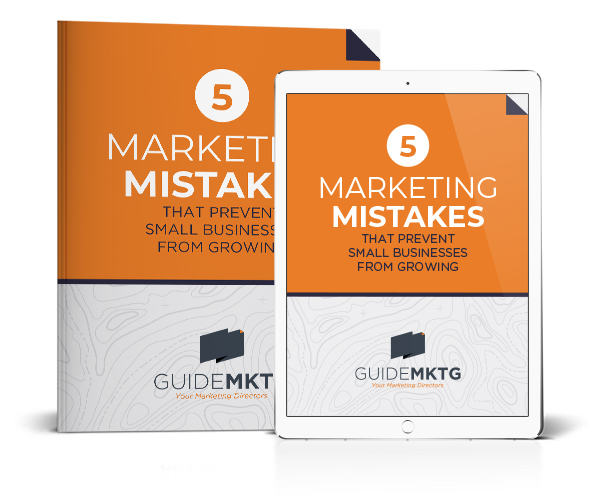Email marketing is a great way to keep in touch with your customers, build relationships, and ultimately, grow your business. But what do you do when your email list becomes dormant and nobody is engaging with your content? Or worse yet, if you have thousands of email contacts in a database but you’ve never actually sent them an email? Here are 7 tips to revive a dormant email list and transform it into a revenue-generating tool.
7 Tips to Engage Your Email List
Whether your email list is unengaged or has never heard from you at all, these seven tips will help you write better marketing emails that will grow your business.
Tip #1: Add Value
People are on your email list because:
- A) You offered them something incredibly valuable in exchange for their email address (usually a lead generator).
OR
- B) They scheduled an appointment or purchased something from your company, permitting you to use their email address to contact them.
Either way, you have something to offer that they want. They are waiting to hear from you, to learn more about how your business can help them. Instead of ignoring all of those previous and potential clients, use nurture emails to deepen the relationship and generate more sales.
Share helpful tips related to what your company does or provide information that solves a piece of their pain point.
The #1 way to fix your subscriber engagement problem is to send emails that customers look forward to opening. That means your emails should be useful, focused on your customer (not your product), and relatable
If you’re not sure what to write about in your nurture emails, use this easy system to brainstorm ideas.
Tip #2: Be Authentic and Transparent
Instead of starting to send regular emails out of the blue, with no explanation, add at least a sentence or two to the first email explaining why you are choosing to send regular nurture emails. Even if your main motivation is to increase revenue, keep your explanation customer-focused.
Here is an example of what a CPA company might send:
“As your trusted CPA, I know that you are making financial decisions every single day- not just at tax time. I will be sending you weekly emails so that you are equipped to make sound financial decisions throughout the year that set you up for success during tax season. If you ever have questions about the information in these emails, or any financial decision you are making, just hit reply. We are always just an email or phone call away.”
The goal of nurture emails is to take the relationship you have with customers from purely transactional to relational. That means you need to be transparent about your intentions and who you are as a company. That also means you have permission to add a little personality into your emails to make them enjoyable to read.
Tip #3: Ask for Feedback
Your current and potential customers are a gold mine of ideas, feedback, and burning questions. To make your emails more engaging, ask your readers what they want to know about or learn from you. Use their feedback and questions to create helpful, relevant content.
When you answer their questions well, you position yourself as an expert in your field, further deepening the relationship and building trust.
If you don’t currently have an audience, online research can help you figure out what questions to answer.
Tip #4: Stick to the Point
The best way to get people to stop reading, or opening, your emails is to send a pointless, rambling email that provides no value to the reader.
When you sit down to write an email, have one singular goal in mind. The bulk of your email should provide information (about one topic) that leads people to take an action (just one action).
When you finish writing your email, read it out loud. If there is any information that doesn’t contribute to the overall goal of your message, delete it. Each sentence has to be uber-focused on getting your reader to take an action, whether that action is reading a blog post, scheduling an appointment, or buying a product.
Donald Miller compares each piece of information we give customers to handing them bowling balls. They can likely carry one or two bowling balls at a time but if you ask customers to carry more than one or two pieces of new information, they will drop them all and give up.
If reading your emails is an exercise in how many bowling balls readers can juggle, your messages are going to end up in the trash can. Instead, keep your emails short, to the point, and focused on one singular goal. Marketing is ultimately an exercise in memorization. The more you repeat what you want the people reading your email to do next, the more likely they are to actually do it.
Tip #5: Give More Than You Take
There is nothing wrong with talking about your products or services in a marketing email. However, you don’t want that to be the main focus of all your emails. Use the 80/20 rule as your guide.
Although this rule can be applied to many areas of your small business marketing, for emails, stick to providing value 80% of the time and asking for a sale only 20% of the time. This keeps the focus on your customer and keeps your emails interesting.
Tip #6: Be Consistent
Consistency is key when it comes to email marketing. You can’t send out an email once in a blue moon and expect your clients to keep looking for your company’s name in their crowded inboxes.
Once you start sending emails, commit to a regular schedule that your clients can rely on. Whether it’s weekly, bi-weekly, or monthly, make sure you stick to it. Consistency builds trust and trust increases sales.
Tip #7: Use Your Time Wisely
I know what you’re thinking- the whole reason I don’t use email marketing is because I don’t have time for all of this!
There are two possible solutions for that problem but first, let me ask you a question…do you have time not to use email marketing?
According to Constant Contact, the ROI for email marketing is $36 for every $1 you invest. If you follow these tips and send useful nurture emails, you will see results. I don’t know of any other marketing strategy that provides that level of return. Do you?
To make time for email marketing in your business, try implementing a few of these tips or schedule a call with Guide MKTG. We will write high-converting nurture emails for you so that you can stay focused on all the other aspects of your business. (Actually, we will happily take all of your marketing tasks off your to-do list.)
Reviving a dormant email list may seem like a daunting task, but with these 7 practical tips, it’s doable. Which of these actions can you take this week to re-engage your email list?





